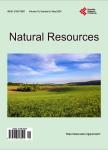Study on Process Economics of Natural Resource Utilization
Study on Process Economics of Natural Resource Utilization作者机构:Department of Chemical Engineering for Energy College of New Energy Shenyang Institute of Engineering Shenyang China Center for Natural Gas Hydrate Research Guangzhou Institute of Energy Conversion Chinese Academy of Sciences Guangzhou China Institute of Adsorption and Inorganic Membrane State Key Laboratory of Fine Chemicals Dalian University of Technology Dalian China
出 版 物:《Natural Resources》 (自然资源(英文))
年 卷 期:2016年第7卷第11期
页 面:611-627页
学科分类:07[理学] 0701[理学-数学] 070101[理学-基础数学]
主 题:Economics Criterion Natural Resources Utilization Process Evaluation Parameter Thermodynamics Driving Force
摘 要:Finite supply of non-regenerative resources triggers a competition between economic entities or between areas, which requires the ways regarding their utilization with higher levels in science and the standards regarding their use with higher efficiency in economics. To solve a problem of process evaluation in science and of driving force in economics during a process design or a process run for natural resources utilization, a process evaluation parameter originated from natural gas hydrate preparation from a small scale to industrialization scale and the equation of the criterion dependent are introduced to evaluate a variety of processes of natural resources utilization. The analyses indicate that the parameter is relevant to internal undeveloped resources amount change with a stable mass composition in a virtual black box model and external variable market with an implication of process efficiency in economy or of process efficiency of resource utilization and that the parameter has similar features of the thermodynamic state functions. Moreover, the equation of the criterion provided is a difference between the value of the process evaluation parameter at the final state and the value of the process evaluation parameter at the initial state in an actual process, which can be used to determine the direction of development and to judge the size of the driving force in an actual process or an economical run. The provided examples and correlative mathematical description can guide how an identification for the undeveloped resources and a real-time adjustment of dynamic production for the developing resource are done and how decisions regarding resource exploitation, the venture forecasting of capital utilization and updating technology are made. The parameter used itself and the equation of the derived criterion can help by playing a predictive role for selecting the optimal use processes and for designing new process of the natural resource utilization or capital



